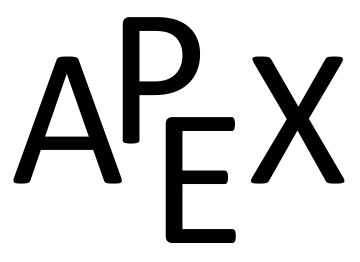We will set up the four triple integrals needed to find the center of mass (i.e., to compute
\(M\text{,}\) \(M_{yz}\text{,}\) \(M_{xz}\) and
\(M_{xy}\)) and leave it to the reader to evaluate each integral. Because of symmetry, we expect the
\(x\)- and
\(y\)- coordinates of the center of mass to be 0.
While the surfaces describing the solid are given in the statement of the problem, to describe the full solid
\(D\text{,}\) we use the following bounds:
\(0 \leq \rho \leq 4\text{,}\) \(0 \leq \theta \leq 2\pi\) and
\(0 \leq \varphi \leq \pi/3\text{.}\) Since density
\(\delta\) is constant, we assume
\(\delta =1\text{.}\)
The mass of the solid:
\begin{align*}
M \amp = \iiint_D\, dm = \iiint_D\, dV\\
\amp = \int_0^{\pi/3}\int_0^{2\pi}\int_0^4\big(\rho^2\cos(\varphi)\big)\, d\rho\, d\theta\, d\varphi\\
\amp = \frac{64}3\big(2-\sqrt{3}\big)\pi \approx 17.958\text{.}
\end{align*}
To compute
\(M_{yz}\text{,}\) the integrand is
\(x\text{;}\) using
Key Idea 14.7.15, we have
\(x = \rho\cos(\varphi)\cos(\theta)\text{.}\) This gives:
\begin{align*}
M_{yz} \amp = \iiint_D x\, dm\\
\amp = \int_0^{\pi/3}\int_0^{2\pi}\int_0^4 \big((\rho\cos(\varphi)\cos(\theta))\rho^2\cos(\varphi)\big) \, d\rho\, d\theta\, d\varphi\\
\amp = \int_0^{\pi/3}\int_0^{2\pi}\int_0^4 \big(\rho^3\cos^2(\varphi)\cos(\theta)\big) \, d\rho\, d\theta\, d\varphi\\
\amp =0\text{,}
\end{align*}
which we expected as we expect \(\overline{x} = 0\text{.}\)
To compute
\(M_{xz}\text{,}\) the integrand is
\(y\text{;}\) using
Key Idea 14.7.15, we have
\(y = \rho\cos(\varphi)\sin(\theta)\text{.}\) This gives:
\begin{align*}
M_{xz} \amp = \iiint_D y\, dm\\
\amp = \int_0^{\pi/3}\int_0^{2\pi}\int_0^4 \big((\rho\cos(\varphi)\sin(\theta))\rho^2\cos(\varphi)\big) \, d\rho\, d\theta\, d\varphi\\
\amp = \int_0^{\pi/3}\int_0^{2\pi}\int_0^4 \big(\rho^3\cos^2(\varphi)\sin(\theta)\big) \, d\rho\, d\theta\, d\varphi\\
\amp = 0\text{,}
\end{align*}
which we also expected as we expect \(\overline{y} = 0\text{.}\)
To compute
\(M_{xy}\text{,}\) the integrand is
\(z\text{;}\) using
Key Idea 14.7.15, we have
\(z = \rho\sin(\varphi)\text{.}\) This gives:
\begin{align*}
M_{xy} \amp = \iiint_D z\, dm\\
\amp = \int_0^{\pi/3}\int_0^{2\pi}\int_0^4 \big((\rho\sin(\varphi))\rho^2\cos(\varphi)\big) \, d\rho\, d\theta\, d\varphi\\
\amp = \int_0^{\pi/3}\int_0^{2\pi}\int_0^4 \big(\rho^3\sin(\varphi)\cos(\varphi)\big) \, d\rho\, d\theta\, d\varphi\\
\amp =16\pi \approx 50.266\text{.}
\end{align*}
Thus the center of mass is
\((0,0,M_{xy}/M) \approx (0,0,2.799)\text{,}\) as indicated in
Figure 14.7.24.

